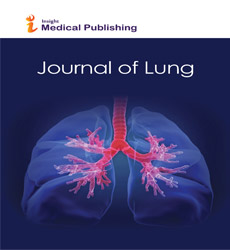The inflammation associated with lung cancer is mediated by sphingosine-1-phosphate
Michela Terlizzi
University of Salerno, Italy
Received: June 07, 2022; Accepted: June 14, 2022; Published: June 21, 2022
Abstract
Background. Epidemiological evidence indicate that almost 40% of COPD patients develop lung cancer; whereas cigarette smoke (CS), the leading cause and the most common risk factor for both COPD and lung cancer, is at the basis of almost 90% of lung cancer establishment. Aims and objectives. In our previous study we demonstrated AIM2 inflammasome drives the release of pro-inflammatory and pro-fibrotic factors involved in the exacerbation stage of COPD and that it could play a pro-carcinogenic role in lung cancer, in that its activation in tumor-associated plasmacytoid dendritic cells (pDCs) is associated to lung tumor cell proliferation. Methods. We took advantage of a mouse model of COPD induced by CS inhalation. We compared the murine data to human lung adenocarcinoma-derived samples stratified according to the smoking and COPD status. Results. We demonstrated that the exposure to first-hand smoking leads to emphysematous changes typical of human COPD, associated to bronchial tone impairment, collagen deposition and IL-1-like cytokine release. We found that AIM2 was involved in smoking-induced lung inflammation and COPD-like features in that its expression was higher in lung recruited DCs and macrophages of smoking mice compared to mice exposed to filtered air (control group). On the other hand, we found that AIM2 expression was higher in the cancerous tissues of lung cancer patients than non-cancerous (normal) tissues, independently of COPD and smoking status. Interestingly, higher expression of AIM2 in non-cancerous tissues of smoker lung cancer patients with COPD was associated to a higher hazard ratio of lower survival rate than patients who presented lower levels of AIM2. Conclusions. Our data imply that AIM2 inflammasome plays a role at the crosstalk between smoke-induced COPD and lung cancer, affecting patients’ survival.
Open Access Journals
- Aquaculture & Veterinary Science
- Chemistry & Chemical Sciences
- Clinical Sciences
- Engineering
- General Science
- Genetics & Molecular Biology
- Health Care & Nursing
- Immunology & Microbiology
- Materials Science
- Mathematics & Physics
- Medical Sciences
- Neurology & Psychiatry
- Oncology & Cancer Science
- Pharmaceutical Sciences
